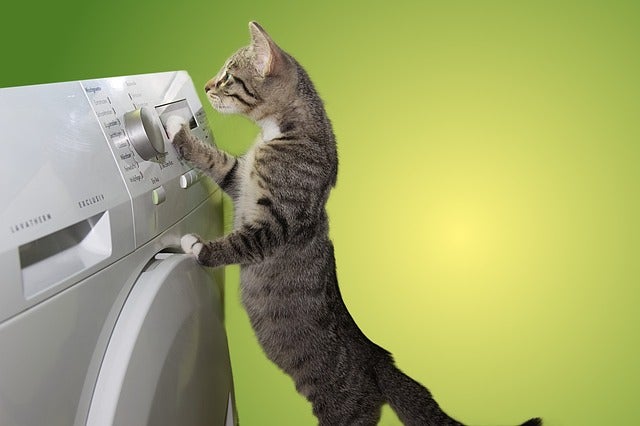Dryers are sold in both electric and gas-fired models. The drying process consists of tumbling clothes, heating and airing them. While gas dryers generally use less energy than electric models, and are therefore less expensive to operate. Gas dryers usually require a higher first cost to buy and install because they require both a gas line and a vent pipe to the outside.
Older gas models may have a continuously operating pilot light which wastes energy. Newer models are required to have electronic ignition systems rather than pilot lights.
When considering a new clothes dryer, look for the dryness sensor that automatically turns the dryer off when it detects the desired level of dryness. There are different types of sensors, the most effective seem to the those that detect moisture in the drying drum. Others hat sense the exhaust air temperature are lower in cost and seem less accurate. Any sensor type is better than no sensor or just using a timer. Energy savings on the order of 10 to 15 percent are typical.
If you remove still slightly damp clothes it will reduce the need for ironing which will also lower your energy use. Other reasons for not over drying clothes include reducing static electricity and shrinkage plus increasing fabric life.
Separate your clothes into light and heavy weight fabrics as the lighter weight ones dry quicker while heavier weight ones take longer. Separating before drying lets you dry the first load and then take advantage of the already heated drum for drying the next load.
Accumulate laundry when possible so you can wash and dry full loads. In many cases, you may have a matched washer and dryer, so a full washer load will also be a full dryer load.
Take care you do not overfill either the washer or the dryer. Washing and drying small loads wastes energy and overloading causes other problems.
Clean the dryer exhaust vent periodically of accumulated lint.
The exhaust vent hood flapper valve should also be checked to ensure it opens and closes freely. Otherwise, unconditioned outside air will enter the house through the dryer vent, increasing your heating and cooling costs, not to mention allowing insect access.
Follow the maker's instructions and clean the dryer lint filter before each load. Restricted air flow from a clogged filter can be a fire hazard, while also reducing a dryer's performance.
When weather and local restrictions permit, hang your clothes outdoors and use free solar energy.
EEA offers rebates on Heat Pump (Ventless) or Energy Star dryers.

